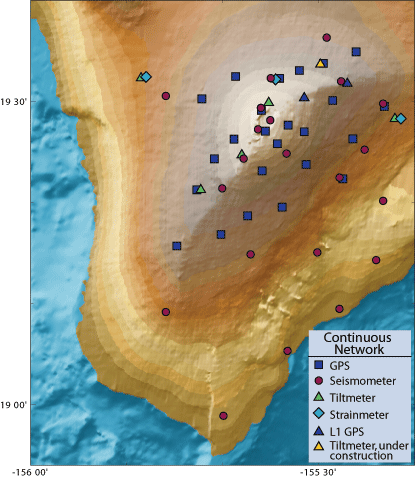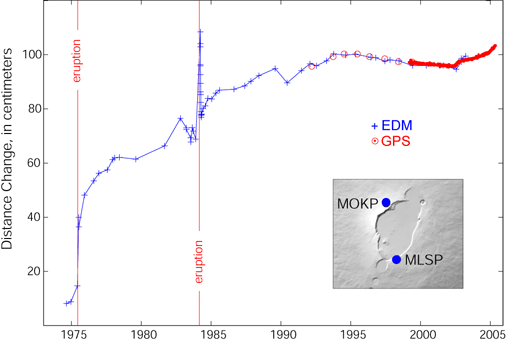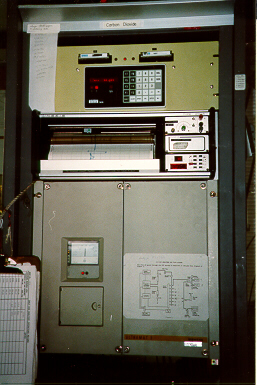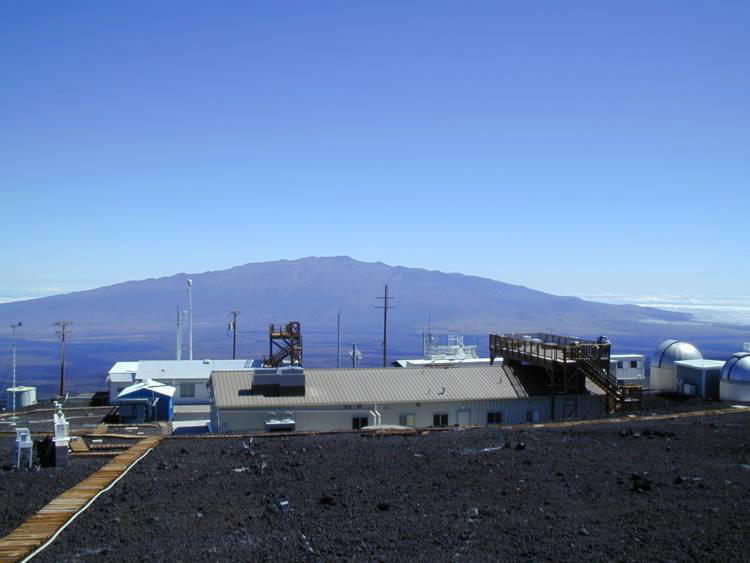|
Mauna Loa By Julie Wallan |
|
Monitoring
A scientist of the Hawaiian Volcano Observatory obtaining distance measurements of Kilauea's crater. A snowy Mauna Loa sits behind him. (1988)
The Hawaiian Volcano Observatory monitors all activity at Mauna Loa volcano very closely in many different ways. Daily, weekly, and monthly reports are made using data from instruments that are on the watch 24 hours a day, 7 days a week. Examples of modern instruments used are electronic tiltmeters (measure the changes in inflation or deflation of the ground), GPS recievers, telemetered seismometers (measure the magnitudes of earthquakes and tremors), gas-reading and measuring machines and devices, and electronic distance meters (measure changes in distance between two points, like the diameter of a caldera)
A map showing all 24/7 Mauna Loa monitoring instruments and their locations.
This graph is an example of what the Hawaiian Volcano Observatory is capable of producing with their extensive monitoring system at Mauna Loa. The graph shows the changing distance across Mauna Loa's caldera, Moku`aweoweo between points at MOKP and MSLP (see map inset). The measurements in the graph were taken by an electronic distance meter (blue) and GPS receivers (red). The thick red line indicates an important shift from contraction to extension, which occured in May 2002.
This is a nondispersive infrared gas analyzer, which takes atmospheric CO2 concentrations. 4 measurements are taken per hour, for about 6 hours or more a day. There are 44 years of data on the CO2 concentration levels, which makes Mauna Loa the place with the longest continuous record on the planet.
The Hawaiian Volcano Observatory at Mauna Loa.
CHECK IT OUT! Additional Monitoring Information and Updated Recent Activity: Current reports, information releases, and updates: http://volcano.wr.usgs.gov/maunaloastatus.php Live cameras: http://www.mlo.noaa.gov/livecam/livecam.html General Information, history, and reports: http://www.volcano.si.edu/world/volcano.cfm?vnum=1302-02=&volpage=weekly Gas emission data: http://cdiac.ornl.gov/trends/co2/sio-keel-flask/sio-keel-flaskmlo_c.html Monitoring and instrument data: http://hvo.wr.usgs.gov/maunaloa/current/monitoringdata.html
|




